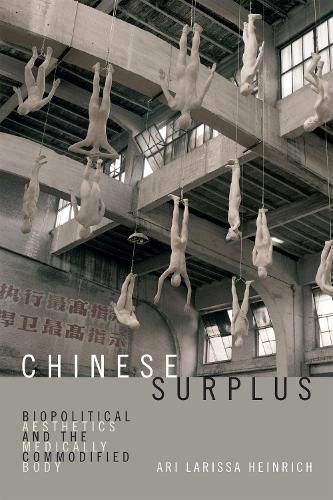Readings Newsletter
Become a Readings Member to make your shopping experience even easier.
Sign in or sign up for free!
You’re not far away from qualifying for FREE standard shipping within Australia
You’ve qualified for FREE standard shipping within Australia
The cart is loading…






What happens when the body becomes art in the age of biotechnological reproduction? In Chinese Surplus Ari Larissa Heinrich examines transnational Chinese aesthetic production to demonstrate how representations of the medically commodified body can illuminate the effects of biopolitical violence and postcolonialism in contemporary life. From the earliest appearance of Frankenstein in China to the more recent phenomenon of cadaver art, he shows how vivid images of a blood transfusion as performance art or a plastinated corpse without its skin-however upsetting to witness-constitute the new realism of our times. Adapting Foucauldian biopolitics to better account for race, Heinrich provides a means to theorize the relationship between the development of new medical technologies and the representation of the human body as a site of annexation, extraction, art, and meaning-making.
$9.00 standard shipping within Australia
FREE standard shipping within Australia for orders over $100.00
Express & International shipping calculated at checkout
What happens when the body becomes art in the age of biotechnological reproduction? In Chinese Surplus Ari Larissa Heinrich examines transnational Chinese aesthetic production to demonstrate how representations of the medically commodified body can illuminate the effects of biopolitical violence and postcolonialism in contemporary life. From the earliest appearance of Frankenstein in China to the more recent phenomenon of cadaver art, he shows how vivid images of a blood transfusion as performance art or a plastinated corpse without its skin-however upsetting to witness-constitute the new realism of our times. Adapting Foucauldian biopolitics to better account for race, Heinrich provides a means to theorize the relationship between the development of new medical technologies and the representation of the human body as a site of annexation, extraction, art, and meaning-making.